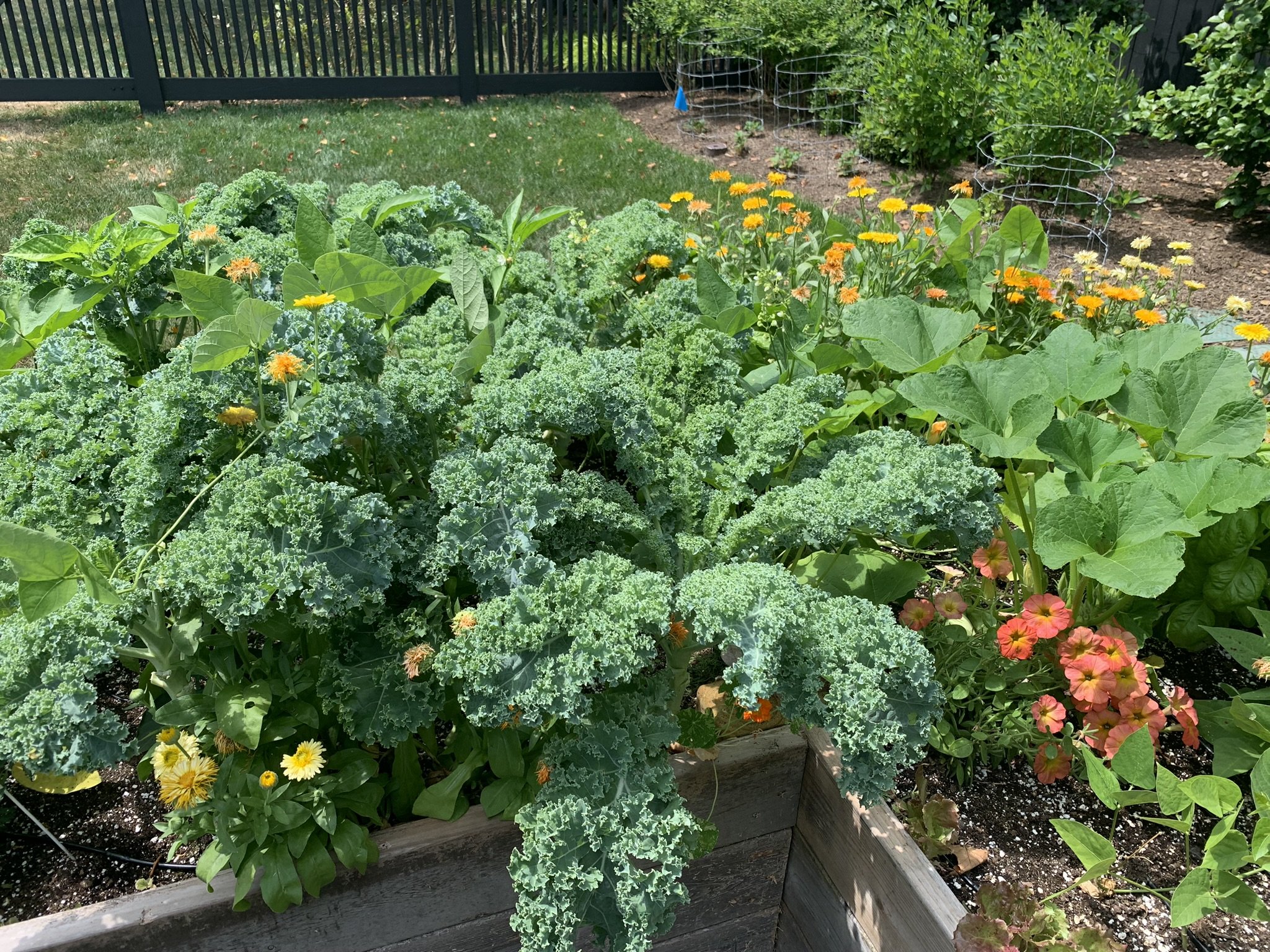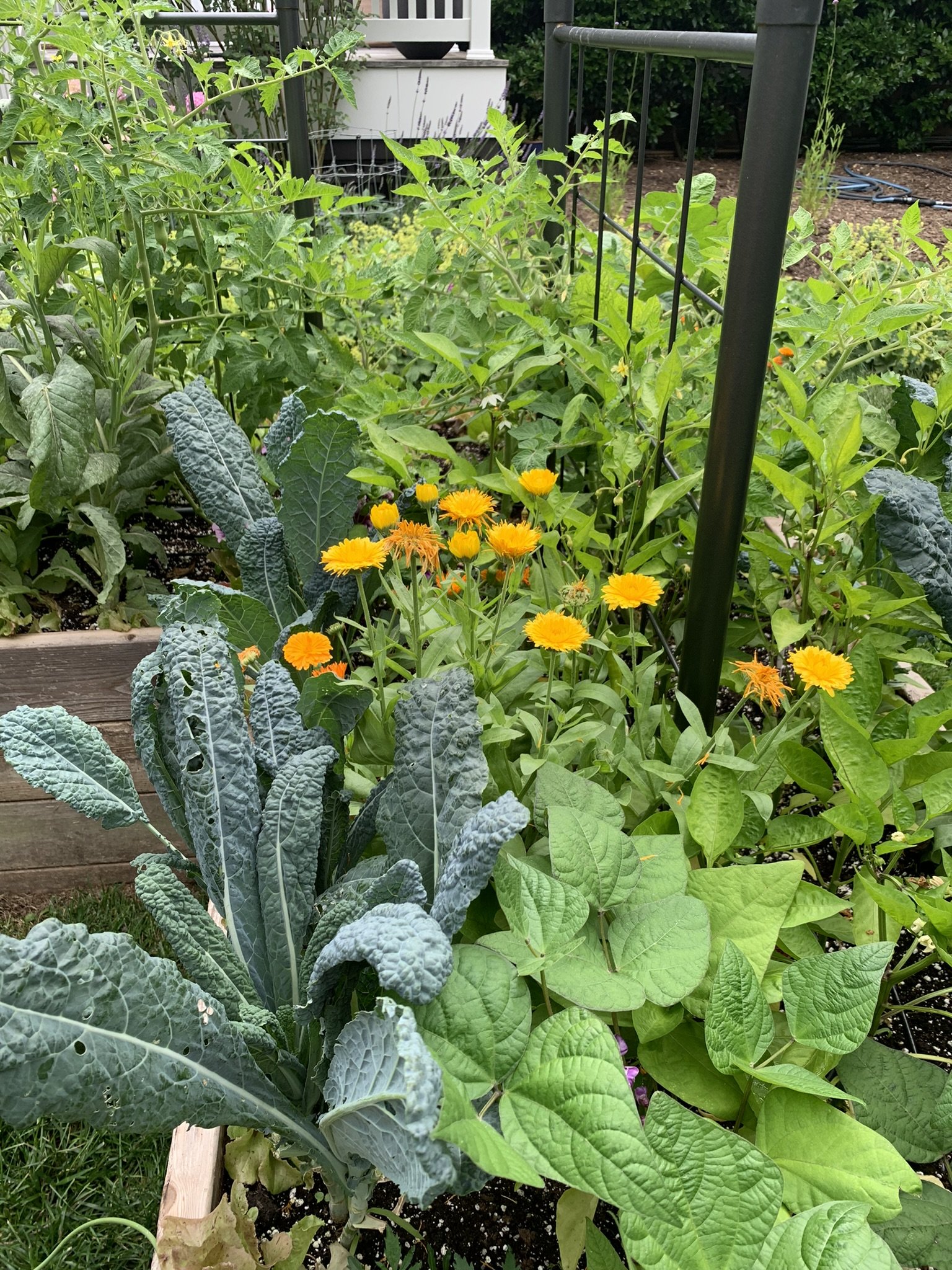Garden Planning Basics for the New Year
I’ll be the first to admit that I used to be a "chaos planter." Picture this: a raised bed brimming with squash vines tangling with tomato plants, carrots trying to elbow their way through, and a rogue zucchini taking over like it owned the place. It wasn’t pretty, and while I managed to harvest some veggies, the results were haphazard at best. I didn’t get the abundance that I thought I should. I mean, I planted a seed and a plant grew, shouldn’t I get the fruit?
Then one January, I decided to start planning my garden layout before planting season. The results were nothing short of transformative. By mapping out my raised beds, choosing the right crops for the season, and practicing companion planting, my garden became more productive and less stressful to manage.I was literally harvesting baskets and baskets of fruit in the same amount of space! I couldn’t believe it and my friends and neighbors were happy to have me share with them.
Now making garden plans for myself and others, is my jam! It was the first product I developed for my business and it’s still my number 1 product during winter and the beginning of spring. This little step changed my life and I want to help change yours!
If you’re starting fresh this year, planning your garden now will save you time, effort, and headaches later. Let’s dive into the basics of raised bed garden planning so you can set yourself up for success!
Mapping Out Your Raised Beds
One of the biggest benefits of raised bed gardening is having a defined space to work with, which makes planning a breeze. The first step is to measure your beds and sketch out a map. You can do this on paper or digitally—whatever works best for you. There are many different apps and programs you can use to plan out your beds. But really you just need to start with the measurements so you know how much space you have to plant in. The following steps are what we will take into consideration in this space.
What to grow
What to plant with what
How to space your raised beds
With focusing on these three things at first, you garden plan will have a good foundation, a full abundant spring and summer and an easy plan to follow for fall. You can take everything we go through here and apply it to individual seasons if you aren’t ready to plan your entire year just yet.
Selecting the Right Crops for Your Climate
Now that you have your space measured out, you should create a list of what you want to grow. Each plant has a season that it grows in. This comes with experience or with coaching sessions from me, but breaking plants down into the seasons they best grow in will make your garden more successful immediately! Focus on separating your plants into cold, cool, warm and hot seasons. January is the perfect time to start planning cold-hardy crops that thrive in cooler temperatures and can be planted out in February. Keep in mind this advice is focused specifically on Northern Virginia.
Here are five cold-hardy veggies to consider this month:
Kale – This nutrient-packed leafy green thrives in the cold and even becomes sweeter after a frost.
Spinach – Quick-growing and versatile, spinach is a must for winter gardens.
Carrots – These root veggies grow well in cool soil and store beautifully for months.
Radishes – Fast-growing and frost-tolerant, radishes are perfect for instant gratification.
Broccoli – A hardy veg that does fine in snow and you can eat the head and the leaves.
As you start to create your planting plan start with your larger plants first! Size does matter in the garden when it comes to nutrients. And so does the ability to reach into your garden bed. If you plant the larger plants on the outside you have to reach over them. So let’s plant smarter not harder! With the above suggestions I’d start with broccoli and kale. Then I’d move on to the medium size plants with spinach and finally fill in the space. Of course this is incredibly basic and is taking into account a small space and a small amount of plants not to mention herbs and flowers. There are so many plants to grow in cool weather that you can plant before the estimated last frost date!
Now that you understand sizing and have a list of what to grow, before you start plugging in your plants, you also need to think about what plants can be planted together. Let’s touch base on this, it’s called companion planting and it isn’t as mysterious as it feels.
Companion Planting Basics
Companion planting is the art and science of grouping plants that benefit each other. Some plants repel pests, while others improve soil health or support each other’s growth. The science behind companion planting lies in plant interactions. Certain plants release chemicals through their roots or leaves that deter pests or enhance neighboring plants’ nutrient uptake. Sometimes it’s even their aroma. By pairing compatible crops, you create a more harmonious and productive garden ecosystem.
Here you are two examples that you can use in your own garden.
Example 1: Sage, Cabbage, and Carrots
Sage repels cabbage moths, a common pest for cabbage.
Carrots grow deep, while cabbage grows wide, so they don’t compete for space.
Together, they create a balanced, pest-resistant planting trio.
Example 2: Tomatoes, Basil, and Beans
Basil enhances the flavor of tomatoes and deters aphids and whiteflies.
Beans fix nitrogen in the soil, enriching it for the tomatoes.
All three plants thrive in similar growing conditions, making them a natural team.
When planning your raised beds, think about which crops can support each other. Use your map to group compatible plants and avoid combinations that compete or attract the same pests.
Intensive Planting with Spacing
Intensive planting is all about maximizing yields while minimizing wasted space. This technique involves planting crops closely together in a way that complements their growth habits. So let’s throw those spacing requirements on the back of those seed packets away! Not only does this method produce higher yields, but it also helps suppress weeds and retain soil moisture.
Raised beds are perfect for intensive planting. They have defined space and can accommodate almost all vegetables that you would want to grow. Outside of corn, but I don’t really recommend people growing their own corn in raised beds because you need so many stalks to pollinate and make it worth it. So for raised beds you can forget the wide spacing guidelines on the seed packets and plant more densely because the soil is richer and better aerated. And let’s use layers! Grow vertically.
So let’s take for example, lettuce, radishes, and carrots make excellent neighbors (companions). Lettuce’s broad leaves provide shade, keeping the soil cool for carrots and radishes to thrive underneath. Similarly, pole beans can climb up trellises, leaving the ground free for sprawling squash vines. By layering plants vertically and horizontally, you can make the most of every square inch of your raised bed.
For example, you can plant:
Carrots in rows just 2–3 inches apart.
Lettuce in a staggered grid to maximize space.Though I do love a good lettuce border.
Radishes between slower-growing crops like broccoli, since they’ll be harvested before the broccoli needs the space.
The key is to group plants with similar growth habits and spacing requirements. Use your drawing to visualize how much of each crop you can fit in your beds, ensuring no space goes to waste. Layering and growing vertically will help for an intensively planted bed while increasing airflow and cutting down on potentially disease. Win for everyone!
Why Planning Saves Time
Planning your garden might seem like extra work, but it’s the secret to a bountiful and stress-free growing season. By mapping your raised beds, practicing intensive planting, and harnessing the power of companion planting, you’ll set yourself up for success with a comprehensive planting plan that is a clear roadmap to follow.
And planning also helps you anticipate crop rotation for the following year. By tracking where you plant certain crops, you can avoid planting the same family of plants in the same spot, which helps prevent soil depletion and pests. And don’t forget to select the right crops for your climate to keep your garden productive year-round.
To make garden planning even easier, I’ve created something to help you take you through my process. This visual graphic helps you map out your raised beds, ensuring every plant has its perfect spot.
Download Your Free Garden Planning Template
Ready to start planning your dream garden? I’ve created a free garden planning template to help you map out your raised beds, plan crop placements, and track your companion planting combinations. This easy-to-use tool will set you up for success and make your garden planning process a breeze.
Download the template right here and start planning the garden that will make this year your most bountiful yet!




